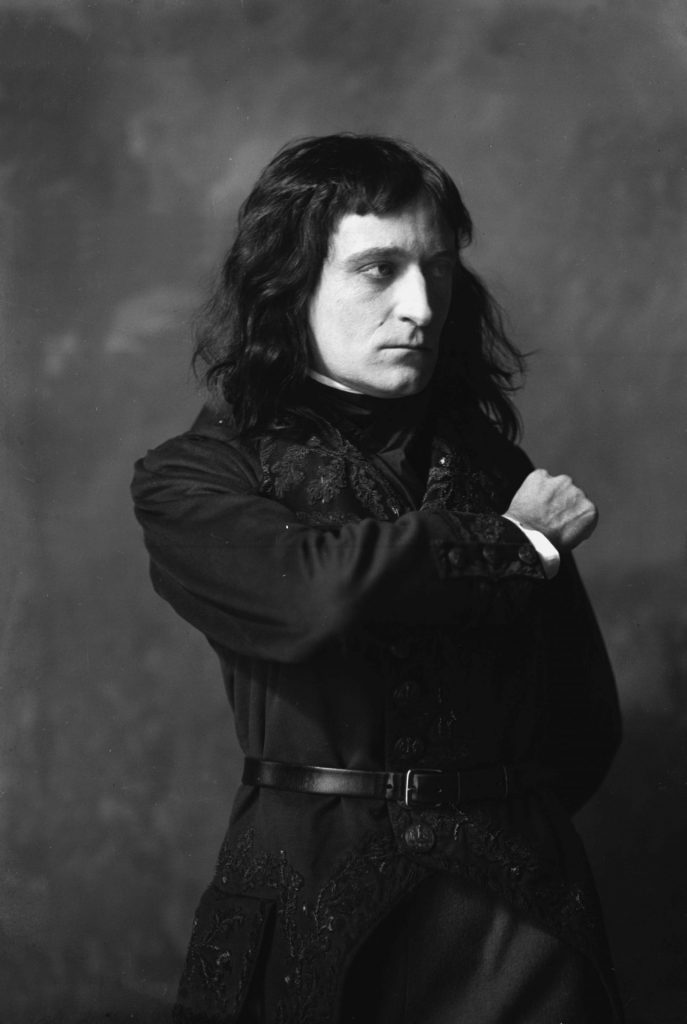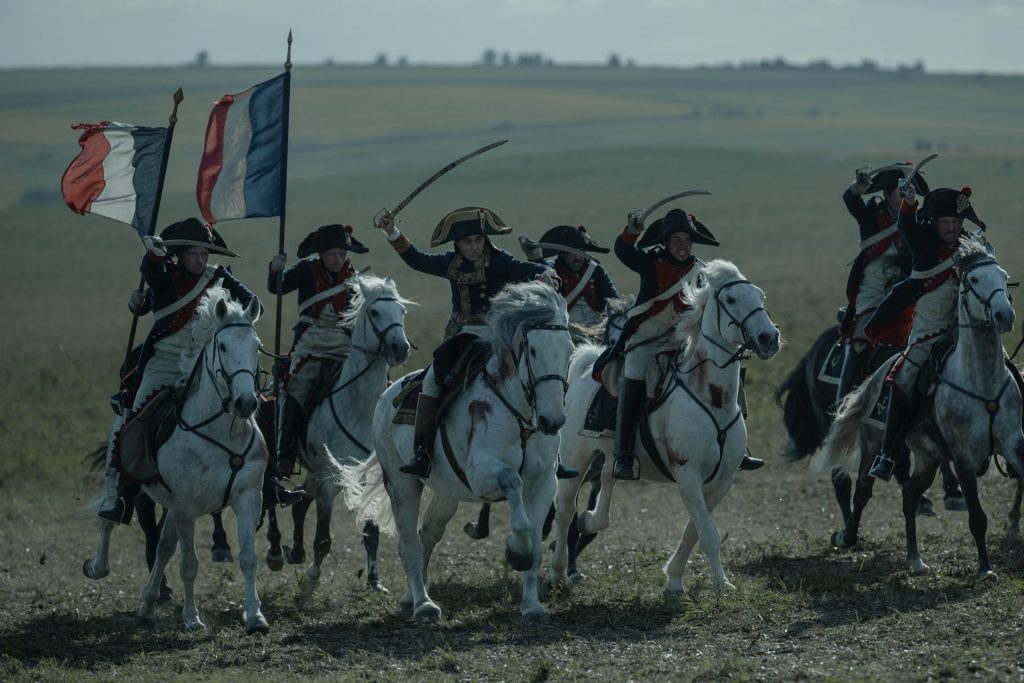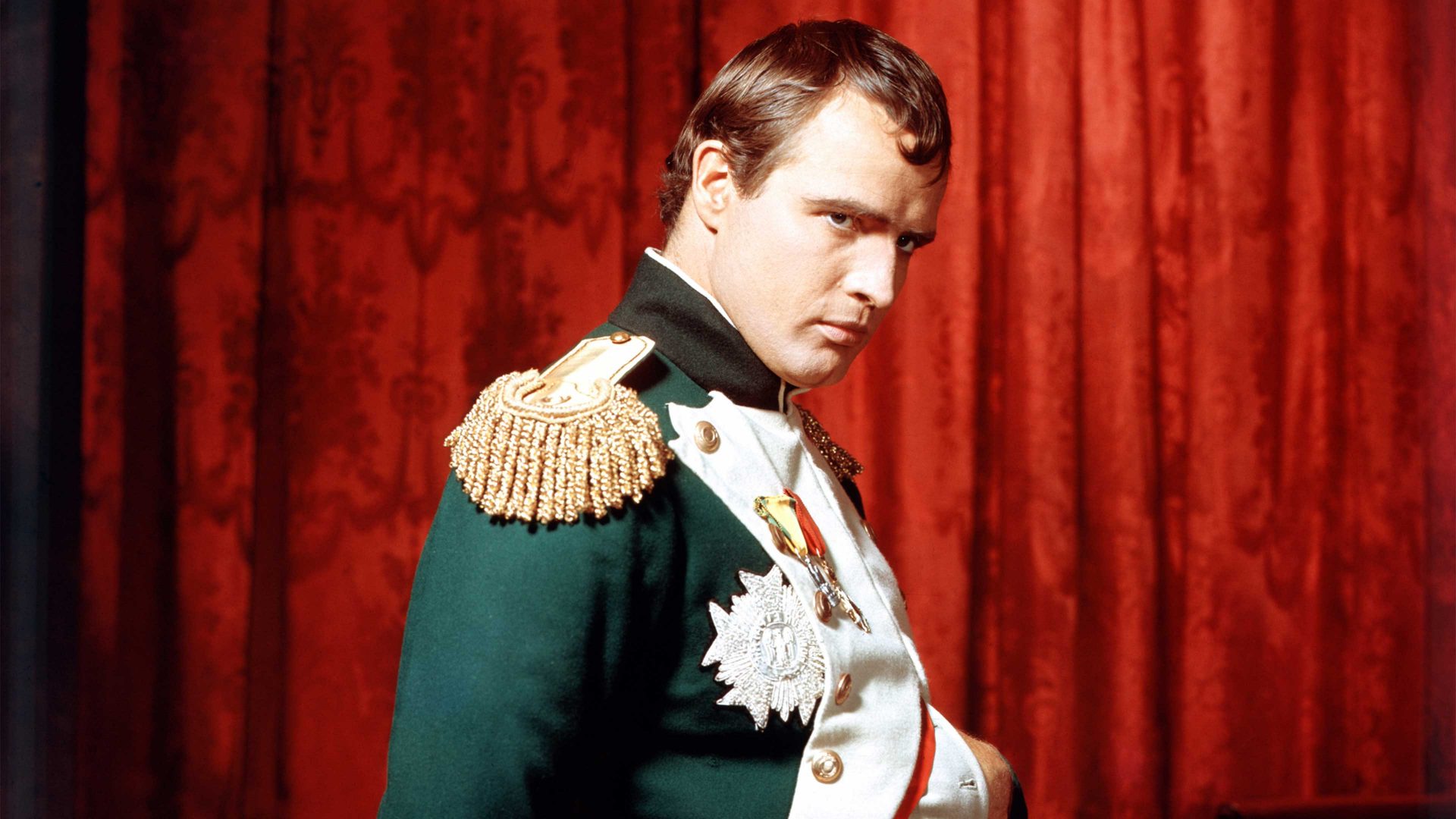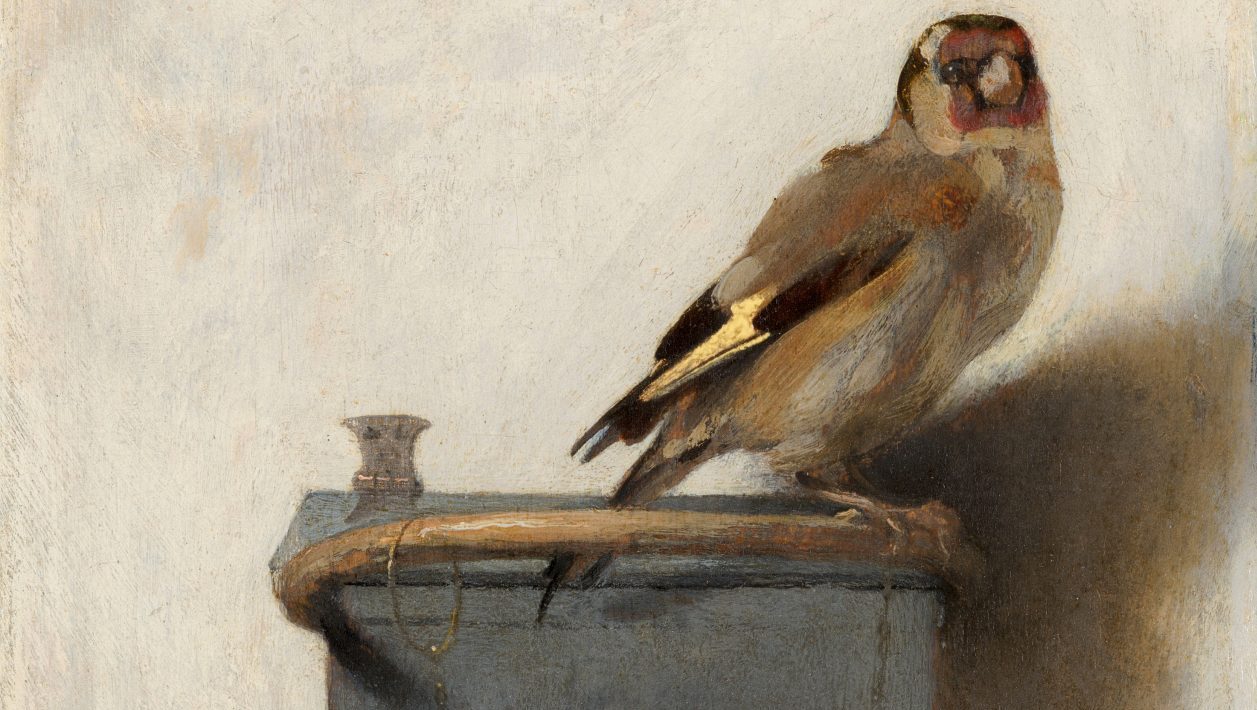What do Alec Guinness, Ian McKellen, Robert Carlyle, Bruno Ganz, Frank Finlay, Taika Waititi, Ian Hart, Steven Berkoff, Noah Taylor and Udo Kier have in common? That’s right, they’ve all played Adolf Hitler.
We’ve had an awful lot of big- and small-screen Führers, with even the likes of Michael Sheard (Grange Hill’s bewigged Mr Bronson) making a living from their physical similarity to Austria’s worst export. By contrast, there haven’t been many movies made about Napoleon Bonaparte.
Those that have been attempted have either tended to feature little-known lookalikes from the Sheard school or, at the other end of the scale, some of the greatest actors ever to grace the screen. That’s certainly the case with Joaquin Phoenix as the man from Ajaccio in Ridley Scott’s forthcoming epic, which has had its first trailer appear online ahead of the movie’s release in November.
The pick of the bunch? That’s hard to say, although if we begin at the beginning of cinema’s rather chaste love affair with Napoleon, we might find ourselves addressing both the best film and the most compelling interpretation of the subject at hand.
By 1927, Abel Gance was already the equal of great American movie directors like DW Griffith. Indeed, the Frenchman had been courted by the Hollywood studios, a process that led to his enjoying a convivial lunch with the man responsible for The Birth Of A Nation. Rather than trying to make a go of things on the west coast, Gance returned to Europe where the success of 1919’s J’Accuse – arguably the first essential movie made about the first world war – and 1920’s trailblazing La Roue had left him able to write his own ticket.
It’s a measure of Gance’s ambition that 1927’s Napoleon began life as a six-part study of Bonaparte, taking in everything from his birth in Corsica to his death in exile in St Helena. The small matter of the Great Depression meant the viewing public had to make do with a solitary film, albeit one with a running time around the five-hour mark. Beginning with the teenage Napoleon enrolling at the military college at Brienne and ending with Bonaparte’s marriage to Joséphine de Beauharnais, Gance’s picture starred his favourite actor, Albert Dieudonné.

Something of a renaissance man, Dieudonné wrote scripts and novels when he wasn’t appearing on screen. He was also a keen student of Napoleon. Whether this is what makes his performance so dynamic is hard to say. However, no other portrayal of the young Napoleon, the thin, angular, hungry Bonaparte of the days before Russia, Elba, Waterloo and St Helena, can rival that of Dieudonné.
All sharp angles and big gestures, Dieudonné for all the world resembles the Napoleon David painted crossing the Alps on horseback. Indeed, it’s easy to imagine the emperor stepping down from his steed and walking straight off the canvas directly on to celluloid.
Of course, all of this occurs in the absence of the spoken word. One might point out that the silence is rather fitting, given that Napoleon himself was starved of language – he didn’t speak French fluently until his early teens, and then only with a thick Corsican accent. However, the truth of the matter is that Dieudonné’s expressive face and Gance’s fluid camerawork – at a time when most directors shot with a static camera, he was among the first to experiment with dollies and cranes – lend Napoleon a restless energy befitting a man of destiny who was so seldom satisfied with his lot.
Although Gance would return to Napoleon towards the tail end of his career, 1960’s Austerlitz was no more a match for his 1927 masterpiece than Pierre Mondy was an adequate substitute for Albert Dieudonné. More successful than Mondy, in large part because he was never called on to carry an entire picture, was Herbert Lom, who played the emperor in Carol Reed’s The Young Mr Pitt (1942) and King Vidor’s 1956 adaptation of War And Peace.
Born in what would become the Czech Republic, Lom’s Napoleon credentials weren’t obvious. That said, he was stocky, swarthy, shortish and happy to suggest a thinning hairline even in his mid-20s. Lom also had extraordinary focus, which could easily translate into intensity. Perhaps not, then, the actor to play the title character in a Napoleon biopic, but ideal for any movie in which the Little General is a substantial but supporting presence. And did Lom’s time as Bonaparte inform the megalomaniacal Commissioner Dreyfus of the later Pink Panther? There’s certainly “rheum” for debate.
Hollywood took its first real swing at Napoleon in the mid-1950s. Adapted from Annemarie Selinko’s bestseller, Henry Koster’s Désirée tells the story of Napoleon’s alleged first love, Désirée Clary. A truly star-studded affair, Désirée featured Jean Simmons in the title role, Merle Oberon as the empress Joséphine and Michael Rennie playing Bonaparte’s love rival, General Bernadotte. As for Napoleon, the role fell to one Marlon Brando, who just so happened to be the hottest actor on the planet at the time of his casting.
The Men, A Streetcar Named Desire, Viva Zapata!, Julius Caesar, The Wild One, On The Waterfront – few careers have kicked off with a run of films to rival Marlon Brando’s first half-dozen. Next to these groundbreaking pictures, playing Napoleon in Désirée might – perversely – have appeared a walk in the park. It certainly wasn’t a role the actor had pursued with any great passion. In fact, he only signed on for Désirée to get out of his restrictive contract with 20th Century Fox.
As he explains in his autobiography, Songs My Mother Taught Me: “[Studio head] Darryl Zanuck insisted I do The Egyptian… He even sued me for 2 million dollars… Eventually he came back with the counter-proposal that I play Napoleon in a movie called Désirée… I did all my homework and did the best I could. A kind and pleasant man, Henry Koster was a lightweight who was much more interested in uniforms than in the impact of Napoleon on European history. I had a chance to work with Jean Simmons… she was winning, charming, beautiful and experienced, and we had fun together. Unfortunately, she was married to Stewart Granger… By my lights, Désirée was superficial and dismal and I was astonished when told that it had been a success.” And that, ladies and gentlemen, is all Marlon Brando has to say about a film in which he played one of history’s true forces of nature in a memoir that is a solid inch thick. By contrast, he dedicates 11 whole pages to Gillo Pontecorvo’s superb but decidedly niche Burn!, original title Quiemada.
For an opposing, and I would suggest more accurate, take on Brando’s performance, here is Laurence Olivier: “Marlon’s genius is that he is able to play a genius. His Napoleon was immeasurably the best Napoleon I’ve ever seen. It was simply marvellous, simply because of his own particular quality of being so easily able to bring his genius to a character who was a genius.”
In Désirée, Brando’s understanding of genius extends to frustration with the inadequacy of others and boredom at the ease with which the impossible is accomplished. Of the other candidates Koster considered for the role, Montgomery Clift would have made for a more fragile Napoleon; Louis Jordan a more conventionally handsome one. In contrast, Brando’s Bonaparte at times carries himself like a rock star, at others possesses the bearing of a chess grandmaster, always at least two moves ahead. It’s a compelling piece of work that not even a fake nose can foil.
Oh yes, and if you haven’t seen Désirée but you think you’re familiar with Brando’s eye-catching coat, that’s because you might have seen it swimming all over Jack Nicholson in The Terror, the horror movie thrown together by B-movie behemoth Roger Corman in two days with the help of Martin Scorsese, Francis Ford Coppola and Monte Hellman.
Speaking of Nicholson, he was Stanley Kubrick’s pick to play Napoleon in a movie that consumed no end of the writer-director’s time without ever making it beyond the boardroom. As to why Kubrick’s Bonaparte biopic was never realised, it might have something to do with the box-office failure of 1970’s Waterloo, an epic account of the battle overseen by the Soviet film-maker Sergey Bondarchuk. And why did Waterloo underperform? Well, that’s an even harder question to answer since, seen from the perspective of the 21st century, Bondarchuk’s picture is a period epic with few equals. As for Rod Steiger’s performance beneath the bicorn hat, it feels rather fitting that the sole Napoleon of the sound era to rival that of Brando was conjured up by the man who played Marlon’s brother in On The Waterfront.
Not that their Bonapartes have an awful lot in common. We first encounter Steiger’s Napoleon abdicating the throne following his humiliation at the Battle of Leipzig. His eyes moist and his voice cracked, this is the great man of 19th-century European history on the brink of a nervous breakdown. It’s something we’ve not seen before on film, but is something we’ll see a lot of throughout Waterloo since, whether he’s in exile or returning in triumph or defeating the Prussian army, this Bonaparte is often fraught and frequently frantic, the director even giving us access to Napoleon’s interior monologue.
Though I’m sure his performance isn’t to everybody’s taste, Steiger’s take on Napoleon is fascinating, given how fast history was moving in the run-up to Waterloo. Exiled to Elba in the spring of 1814, Bonaparte faced down the Duke of Wellington and friends in the summer of 1815. Little wonder Steiger opts for hand-wringing and a raised voice – it’s all he can do to make himself understood over the sound of the cannon fire and the clanging chimes of doom.
That Steiger’s powder-keg Bonaparte is balanced out by an effective, understated performance from Christopher Plummer as Wellington is but another aspect of Waterloo that ought to have ensured it greater acclaim. Though the producer, Dino De Laurentiis, would bemoan a lack of stars, no picture that features Steiger, Plummer, Jack Hawkins and Orson Welles lacks name recognition. More to the point, since Bondarchuk roped in the Red Army to play the warring forces, this film is epic like few pictures before or since. To see 20,000 men in perfect period uniform facing off against one another is quite a thing, eclipsed only by the skill with which the director recreates such celebrated depictions of the battle as Lady Elizabeth Butler’s Scotland Forever! and Félix Henri Emmanuel Philippoteaux’s The Battle of Waterloo: The British Squares Receiving The Charge Of The French Cuirassiers.
And after Waterloo? Little but the light sound of laughter. Napoleon as comedy figure will be familiar to anyone with an appreciation of the 19th-century satirist James Gillray. More recently, however, we’ve been entertained by Terry Camilleri’s ice-cream-obsessed, time-bestriding Bonaparte in Bill & Ted’s Excellent Adventure (1989) and Ian Holm’s height-conscious, dwarf-friendly Boney in Terry Gilliam’s Time Bandits (1981).
Holm is, in fact, a dab hand at playing the Little General for laughs. In Time Bandits, his slightly over-refreshed Napoleon is quick to point out the shortcomings of many of history’s great men. (“Louis XIV, five foot two and a half. Charlemagne, dopey little five-footer! Attila the Hun, five foot one half… Tamburlaine the Great, four foot nine – and three-quarters!”) Then there’s The Emperor’s New Clothes (2001), in which the Oscar nominee plays both the exiled Bonaparte and a lookalike hired by loyalists to take up residence in St Helena while Napoleon proper returns to France. If it’s a charming Napoleon you’ve been on the lookout for, The Emperor’s New Clothes is the movie for you. If you prefer a lothario Bonaparte, Holm’s 1974 miniseries Napoleon In Love – with the great Billie Whitelaw as Josephine – will do.

As for a definitive, modern study of Monsieur Bonaparte, the hopes are that Scott and Phoenix will oblige in a film that – not unlike Gance’s epic – sets out to cover vast swathes of the little man’s life. The early word is that Phoenix – an actor whose lack of vanity makes him the perfect choice to play a man to whom the years were far from kind – is so powerful in the title role, the script has had to be rewritten to accommodate his performance.
But even with another epic biopic in the works, there’s still no getting away from the fact that there are far fewer films about the one European conqueror than the other. In the final balance, it might simply stem from the fact that we know so much more about Hitler, and that the havoc he wrought affected – and, in some cases, still affects – the lives of people we knew or know.
Napoleon, on the other hand, is known to us through the aforementioned portrayals and a number of paintings that invariably depict the subject in a positive light. We have only so many of his words, only so many accounts of his manner and no idea whatsoever of the sound of his voice. All things considered, playing Napoleon is complex stuff.



